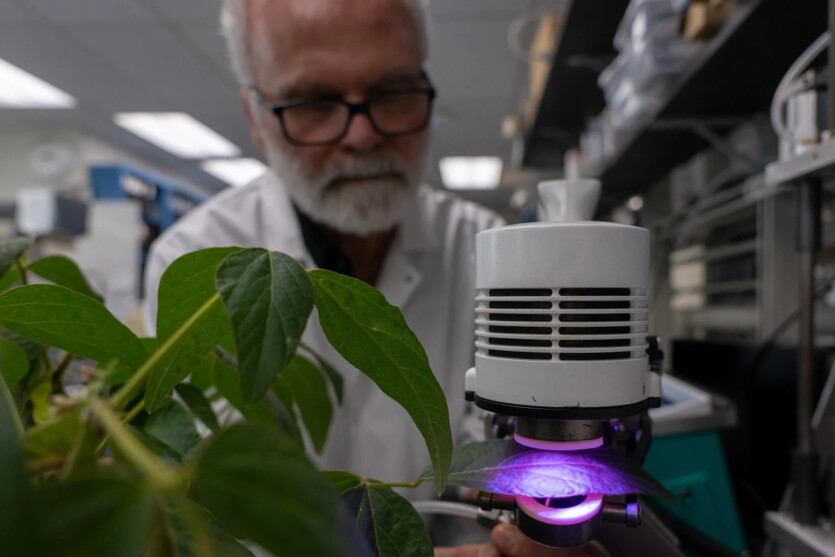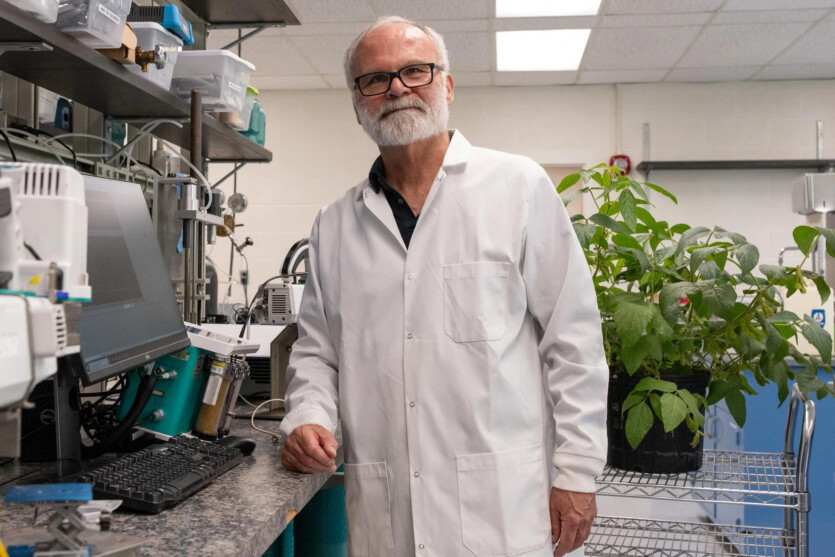
Based on 40 years of research, scientists from Michigan State University in the United States have found that plants secrete isoprene to protect themselves from insects.
On the one hand, this could lead to the creation of a new natural pest control agent, but isoprene, at the same time, is a increases the level of air pollution. Scientists have found that some plants that do not normally produce isoprene can start doing so in extreme cases.
Researchers from the University of Michigan, led by Professor Tom Sharkey, have studied the reactions of insects to isoprene, which make them avoid certain plants. In particular, insects that ate the leaves of such plants experienced cramps due to proteins that are not digested. These proteins also stop the further growth of the larvae.

Another study found that soybeans also begin to release isoprene when their leaves are damaged. Previously, it was thought that crops could not release this chemical. This property could help make plants more resistant to heat and pests.
However, isoprene is a hydrocarbon that worsens air pollution especially in places where pollution levels are already high. If more crops start to release this chemical, it will significantly increase the level of air pollution.
«This is one of the most important questions to be answered by this study. Should we add isoprene to crops to protect them from insects and accept their impact on the ozone? Or should we genetically modify plants to turn off isoprene synthase as much as possible and improve the atmosphere?», — explains Tom Sharkey.
In terms of air emissions, isoprene is second only to methane. These organic compounds, once released into the atmosphere, interact with sunlight and nitrogen oxide produced by coal combustion and emissions of exhaust gases from transportation. In combination with nitric oxide, isoprene forms a toxic mixture of ozone, aerosols and other harmful substances.
Not all plants produce isoprene, and those that do mostly do so in hot weather. Isoprene is found in oaks, poplars, pines, and eucalyptus trees. However, the increase in isoprene production has the effect of impairing further plant growth, as instead of using it for further growth and nutrient storage, plants use it for defense.
Isoprene alone does not repel insects. Instead, it causes an increase in jasmonic acid, a molecule that reduces the ability of insects to digest proteins and slows their growth. Until recently, scientists believed that cultivated plants such as soybeans and corn were unable to produce isoprene because they had lost this property in the course of evolution.
However, in 2022, researchers found two intact isopren synthase genes in soybeans Sharkey decided to conduct an experiment to find out whether environmental stresses could activate the dormant ISPS gene. To do this, the researchers placed clamps on soybean leaves and damaged them. The leaves reacted with a small release of isoprene.
More research is needed to determine how this ability protects soybeans from stressors and whether isoprene is produced under extreme heat conditions. Sharkey is concerned about the potential impact of soybeans on the atmosphere if they produce isoprene during increasingly frequent hot spells.
The results of the study were published in the following journals Science Advances; PNAS
Source: SciTechDaily

Spelling error report
The following text will be sent to our editors: